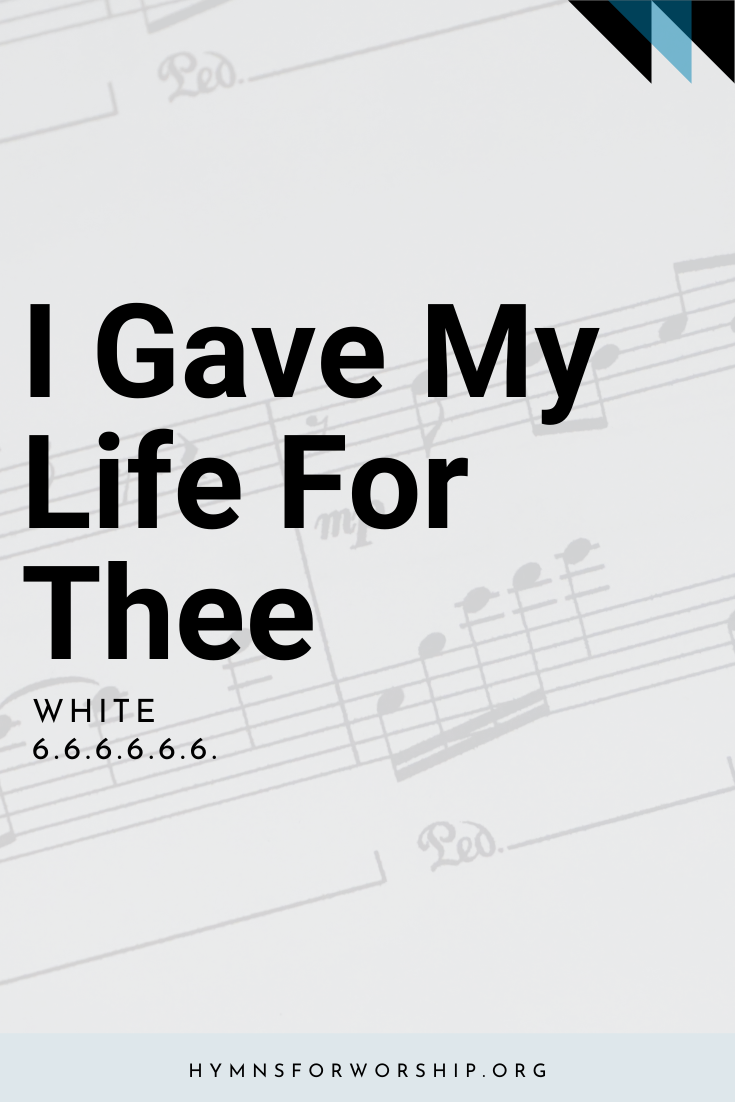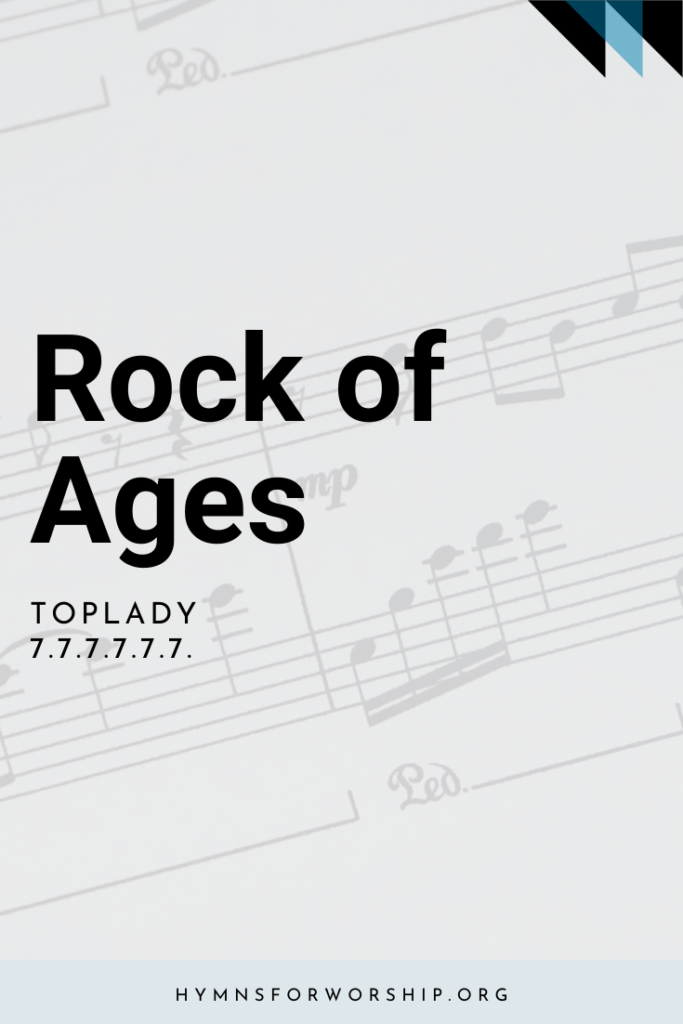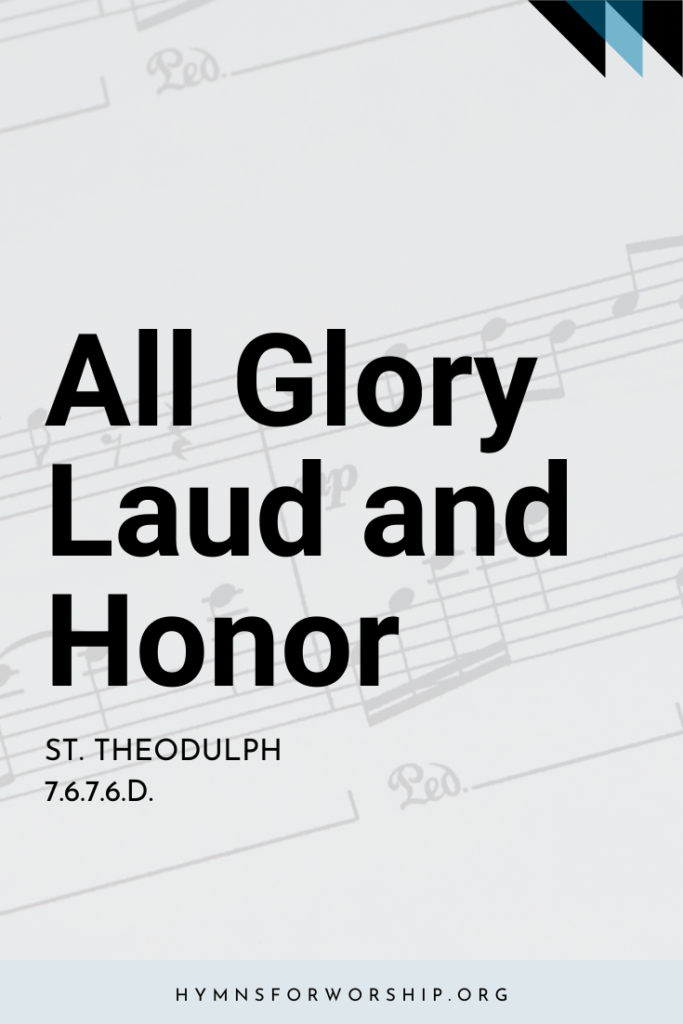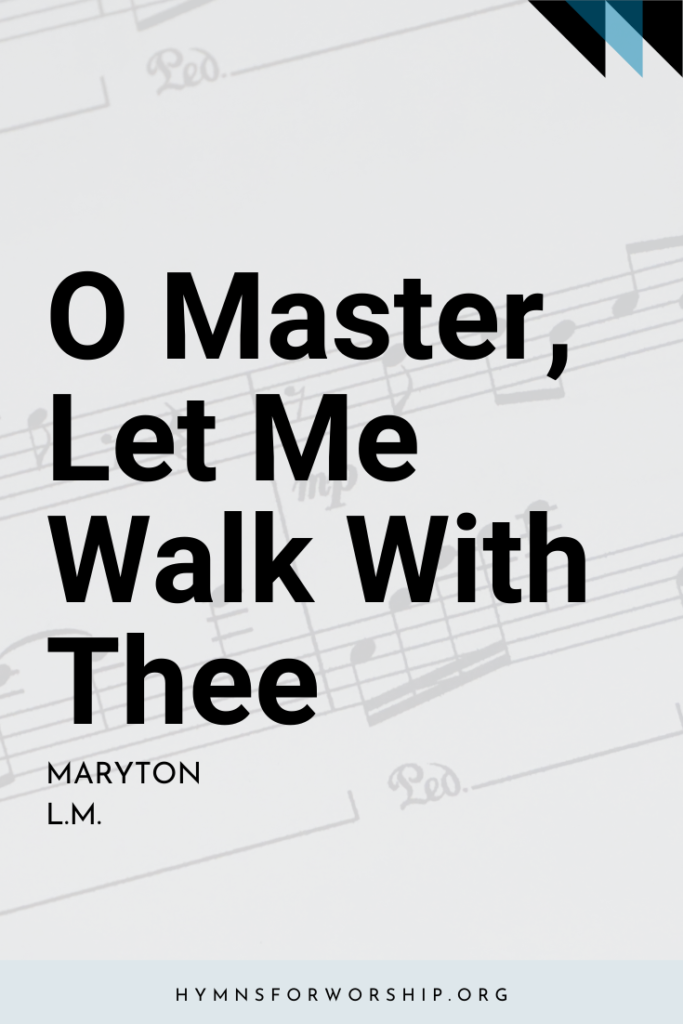GOSPEL >> INVITATION
SDAH 281
I gave my life for thee,
My precious blood I shed,
That thou might’st ransom be,
And quickened from the dead;
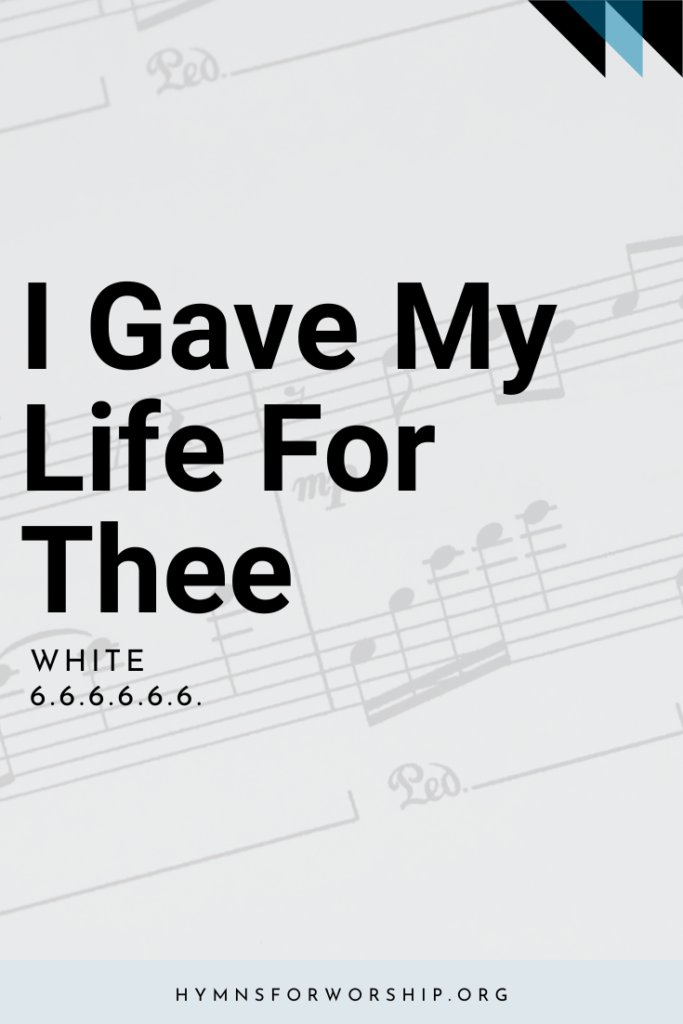

Text
1
I gave my life for thee,
My precious blood I shed,
That thou might’st ransom be,
And quickened from the dead;
I gave, I gave My life for thee,
What hast thou given for Me?
I gave, I gave My life for thee,
What hast thou given for Me?
2
My Fathers house of light,
My glory circled throne,
I left for earthly night,
For wanderings sad and lone;
I left, I left it all for thee,
Hast thou left aught for Me?
I left, I left it all for thee,
Hast thou left aught for Me?
3
I suffered much for thee,
more than thy tongue can tell,
Of bitterest agony,
To rescue thee from hell;
I’ve borne, I’ve borne it all for thee,
What hast thou borne for Me?
I’ve borne, I’ve borne it all for thee,
What hast thou borne for Me?

Hymn Info
Biblical Information
(a) Gal 2:20; Eph 2:1 (b) Phil 2:7 (c) Luke 22:44
Author
Frances Ridley Havergal (1836-1879)
Year Published
1858
Hymn Tune
WHITE
Metrical Number
6.6.6.6.6.6.
Composer
J.E. White (1849-1928)
Hymn Score
Piano Accompaniment
Notes
Get to know the hymns a little deeper with the SDA Hymnal Companion. Use our song leader’s notes to engage your congregation in singing with understanding. Even better, involve kids in learning this hymn with our homeschooling materials.
Was there a time when we seclude ourselves, trying to solve our own problems, and become unreachable? Even at those time, God is surely beside us and is always ready to guide us. He is the God who gave His precious blood that we may have life that is eternal. (Lesson 10, 1st Quarter 2021 -Wednesday, The Unreachable is Us, 3/3/2021)
Jesus suffered much to redeem us from sin and to give us the power we need for our lives to be transformed to His likeness. What do we give to Jesus in exchange for His great sacrifice for our salvation? Yes, the best thing we can give Him is our heart so that He may dwell within and reign in our lives. (Lesson 12, 2nd Quarter 2021 -Monday, The Covenant and the Sacrifice, 6/14/2021)
Frances Ridley Havergal (1836- 1879; see Biographies) was staying in Dusseldorf, Germany. Returning to her host’s house, tired and weary, on January 10, 1858, she sat down to rest in the study. In front of her was a picture of the Savior, beneath which was the motto “I did this for Thee! What hast thou done for Me?” The lines of this hymn flashed into her mind, and taking a scrap of paper, she hastily scribbled them down. Upon reading the words later she considered it to be a poor effort and threw the paper in the fire. However it fell out and on the second thought she decided to retain it. She returned to England and some months later showed the poem of her father, who suggested she keep it. He himself wrote a tune, BACA, especially for it. The original has six stanzas. The hymn was published as a leaflet in 1859 and appeared in Good Words in 1860. It appeared in her Poetical Works, Volume II, 1884, with a Scripture text suggested for each line.
WHITE commemorates the name of the composer, James Edson White, second son of James and Ellen Gould White. He was born July 28, 1849, the same year his father published the first SDA hymnal. He produce the Song Anchor, a Sabbath school hymnal, in 1878; wrote this tune in 1881; and assisted in the selection of hymns for the official hymnbook of the Seventh-day Adventist Church, Hymns and Tunes, 1886. Indeed, the setting of the type, both in the music and words, for this hymnal was allotted to the J.E. White Publishing Company, which he had founded in 1880 at Battle Creek.
White began work at the age of 15 in the Review and Herald office and learned to be a printer. In 1877 he was called to Oakland, California, to serve as manager of the Pacific Publishing Association. In 1893 he felt the burden to preach the gospel to the underprivileged Black population of America and had his steamboat, Morning Star, built in 1894. It was completely equipped as a place of residence, together with a library, chapel, print shop, and photographic room. With his helpers he work particularly in the Yazoo River area, conducting schools, printing and distributing papers, and teaching reading to the illiterate. Many schools were established, which helped to develop the Seventh-day Adventist work in the South. White died on May 30, 1928.

